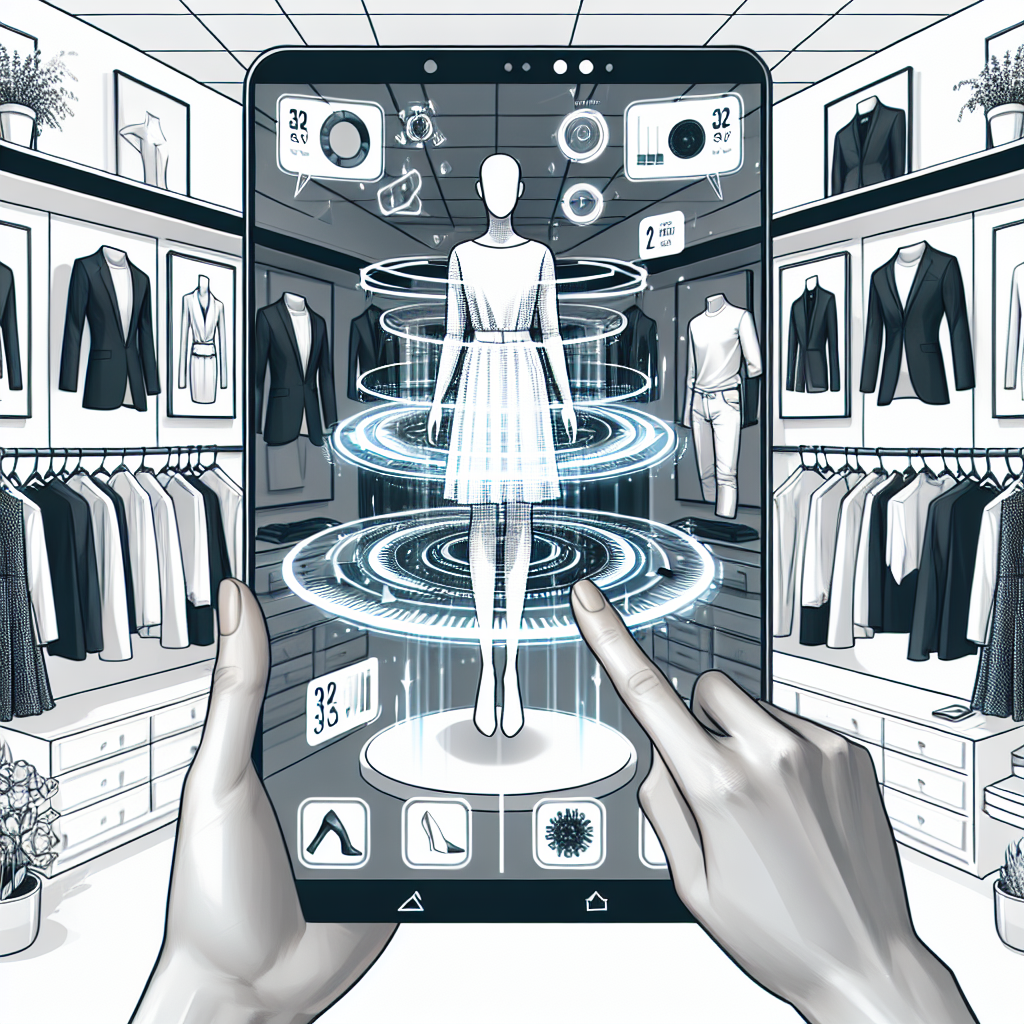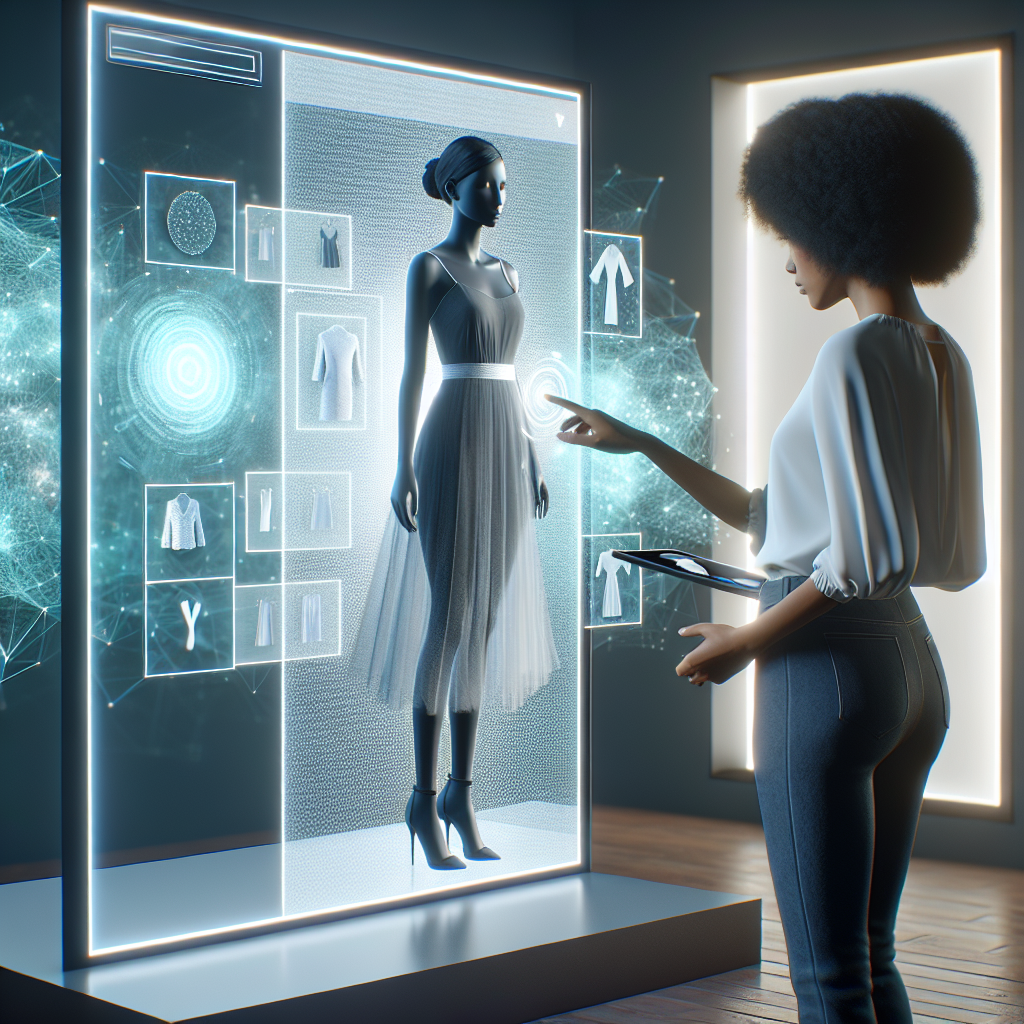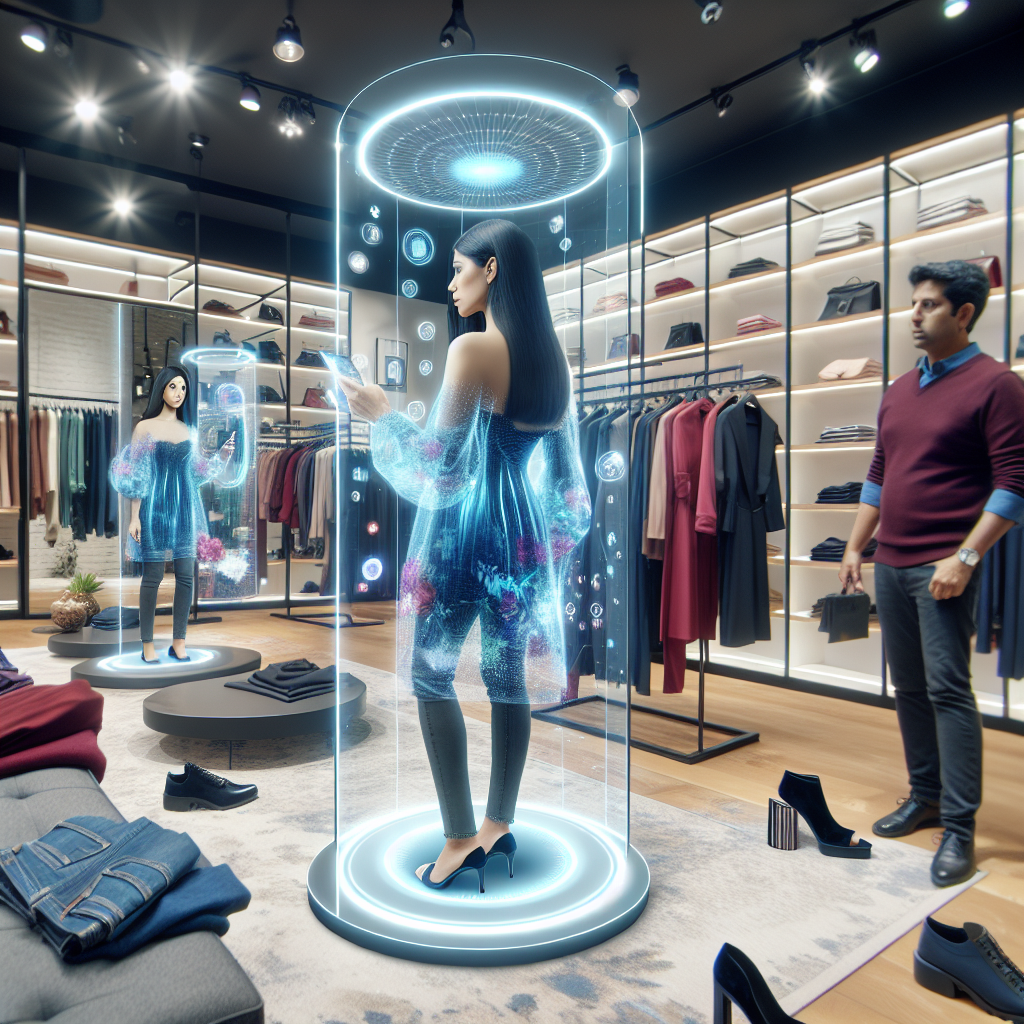Virtual fitting rooms have revolutionized the way we shop for clothes, allowing us to try on various outfits without ever stepping foot in a store. Anything can be accessed via High-speed Internet. Augmented reality takes this innovation to the next level, bringing a whole new dimension to the online shopping experience. By superimposing digital clothing onto a live video feed of the user, augmented reality allows shoppers to see how an outfit will look on their own body in real-time. This technology not only provides a fun and interactive way to shop, but also helps to solve the age-old problem of online clothing returns due to incorrect sizing. Join us as we delve into the impact of augmented reality on virtual fitting rooms and explore how this cutting-edge technology is reshaping the future of fashion retail.
Understanding Augmented Reality Technology
Augmented reality (AR) is a technology that overlays digital information such as images, videos, or 3D models onto the real world. This integration of virtual elements into the physical environment enhances the user’s perception and interaction with their surroundings. Unlike virtual reality, which immerses users in a completely digital environment, AR supplements the real world with digital content, blending the virtual and physical realms seamlessly.
Definition of Augmented Reality
AR technology superimposes computer-generated sensory inputs like sound, video, graphics, or GPS data onto the user’s view of the real world. By enhancing the user’s sensory perception, AR enriches the overall experience by providing real-time information and interactive functionalities. In the context of virtual fitting rooms, AR can project virtual clothing items onto the user’s image in real-time, allowing them to visualize how the garments would look and fit without physically trying them on.
How Augmented Reality Differs from Virtual Reality
Virtual reality (VR) creates a completely simulated environment that isolates users from the physical world, immersing them in a digital realm. In contrast, augmented reality overlays digital content onto the real-world environment, maintaining the user’s connection to their surroundings while enhancing it with virtual elements. This distinction is crucial in the context of virtual fitting rooms, as AR enables users to see themselves in a virtual representation of the clothing within their actual physical space, offering a more realistic and practical shopping experience compared to VR simulations.
Evolution of Virtual Fitting Rooms

Virtual fitting rooms mark a significant evolution in the way consumers interact with fashion in the digital age. This evolution can be traced back to the traditional in-store fitting experience and the subsequent transition to online shopping platforms that introduced the concept of virtual fitting rooms.
- Traditional In-Store Fitting Experience
- The traditional in-store fitting experience has long been the cornerstone of the retail fashion industry. Customers would physically visit stores, try on clothing items, and make purchase decisions based on how the garments fit and looked on them.
- This tactile and visual experience allowed customers to assess the quality, fit, and style of clothing in real-time, leading to more informed purchasing choices.
- However, this traditional approach had limitations such as time constraints, limited stock availability, and the inconvenience of traveling to physical stores.
- Transition to Online Shopping and Virtual Fitting Rooms
- With the rise of e-commerce and online shopping, retailers sought innovative ways to bridge the gap between the in-store fitting experience and the digital realm.
- Virtual fitting rooms emerged as a solution to replicate the in-store try-on experience in a virtual environment, allowing customers to visualize how clothing items would look on them without physically trying them on.
- By leveraging technologies like augmented reality (AR) and virtual reality (VR), virtual fitting rooms enable consumers to create digital avatars or overlays of themselves to virtually try on different clothing sizes, styles, and colors.
- This transition to virtual fitting rooms revolutionized the online shopping experience, providing customers with a more interactive and personalized way to shop for clothing from the comfort of their homes.

Benefits of Augmented Reality in Virtual Fitting Rooms
Augmented Reality (AR) technology has revolutionized the way virtual fitting rooms operate, offering a range of benefits to both customers and retailers. The integration of AR in virtual fitting rooms has significantly enhanced the overall shopping experience, providing a more interactive and personalized approach to trying on clothing and accessories.
-
Enhanced Customer Experience
AR technology allows customers to visualize how clothing items will look on them in real-time, without the need to physically try them on. This enhances the customer experience by providing a more convenient and efficient way to shop for clothes. Customers can virtually try on multiple outfits and mix and match different pieces without the hassle of changing in and out of clothes in a physical fitting room.
Moreover, AR in virtual fitting rooms enables customers to see how garments fit and move on their bodies from various angles, providing a more accurate representation of how the clothing will look in real life. This level of detail and realism enhances customer satisfaction and confidence in their purchasing decisions, ultimately leading to a more enjoyable shopping experience.
-
Increased Sales and Decreased Returns
One of the key benefits of AR in virtual fitting rooms is its ability to increase sales and reduce returns for retailers. By allowing customers to virtually try on clothing items and see how they fit before making a purchase, AR technology helps mitigate the uncertainty associated with online shopping. This increased confidence in the purchasing process leads to a higher likelihood of customers completing their transactions, ultimately boosting sales for retailers.
Additionally, the ability to accurately visualize how clothing will look and fit through AR reduces the likelihood of customers receiving ill-fitting items and subsequently returning them. This reduction in returns not only saves retailers money on processing and restocking fees but also contributes to a more sustainable and environmentally friendly shopping experience.
-
Personalization and Customization Options
AR technology in virtual fitting rooms also enables a higher level of personalization and customization for customers. Retailers can use AR to recommend personalized outfit combinations based on individual preferences and style choices, enhancing the overall shopping experience. Customers can experiment with different styles, colors, and sizes in real-time, allowing them to tailor their selections to align with their unique tastes and preferences.
Furthermore, AR technology can be integrated with data analytics to track customer preferences and behaviors, enabling retailers to offer targeted recommendations and personalized shopping experiences. This level of customization not only enhances customer satisfaction but also fosters brand loyalty and long-term customer relationships.
Challenges and Limitations of Implementing Augmented Reality
-
Technical Constraints and Cost
Augmented reality technology requires sophisticated hardware and software integration, leading to high initial setup costs. The need for specialized equipment such as high-resolution cameras, sensors, and powerful processors can be a significant barrier for businesses looking to implement virtual fitting rooms. Additionally, ensuring seamless connectivity and synchronization between the augmented reality system and existing infrastructure poses technical challenges that may require expert support, further adding to the overall implementation costs.
-
Privacy and Security Concerns
Integrating augmented reality into virtual fitting rooms raises privacy issues related to the collection and storage of user data. As customers interact with the augmented reality system to try on virtual clothing, there is a potential risk of data breaches or unauthorized access to personal information. Safeguarding user privacy through secure data encryption, stringent access controls, and compliance with data protection regulations presents a complex challenge for retailers and technology developers. Moreover, ensuring transparency regarding data usage and obtaining user consent for data processing are essential aspects that require careful consideration to build trust and confidence among consumers.
-
User Experience and Interface Design Challenges

Designing an intuitive and engaging user interface for augmented reality virtual fitting rooms is crucial for delivering a seamless and enjoyable shopping experience. Balancing the need for realistic virtual garment visualization with ease of navigation and interaction poses a design challenge. Factors such as optimizing rendering speeds, enhancing object tracking accuracy, and incorporating user-friendly controls play a vital role in shaping the overall user experience. Striking the right balance between visual appeal and functional efficiency requires iterative testing and feedback gathering to refine the interface design and ensure that it aligns with user preferences and expectations.
Case Studies: Successful Implementation of Augmented Reality in Virtual Fitting Rooms
-
Retailers Embracing AR Technology
Several retailers have successfully integrated augmented reality (AR) technology into their virtual fitting rooms, revolutionizing the way customers interact with products online. This innovative approach allows consumers to experience a more personalized and engaging shopping experience from the comfort of their homes.
-
Company A: Virtual Try-On for Clothing and Accessories
Company A, a leading fashion retailer, has leveraged AR technology to offer customers a virtual try-on experience for clothing and accessories. By utilizing AR-powered fitting rooms on their e-commerce platform, customers can now see how different garments fit and look on their own bodies before making a purchase. This interactive feature not only enhances the online shopping experience but also reduces the likelihood of returns due to sizing issues, ultimately boosting customer satisfaction and loyalty.
-
Company B: Virtual Makeup and Beauty Products
In the beauty industry, Company B has set a new standard by introducing virtual makeup and beauty product try-on capabilities through AR technology. By enabling customers to virtually test out different makeup shades and skincare products via their smartphones or computers, Company B has empowered consumers to make more informed purchasing decisions. This immersive experience not only increases product engagement but also helps bridge the gap between the online and in-store shopping experiences, leading to a significant increase in conversion rates and customer retention.
Future Trends and Innovations in Augmented Reality for Virtual Fitting Rooms
Augmented reality (AR) technology continues to revolutionize the way consumers experience virtual fitting rooms. The integration of AR with innovative technologies is paving the way for exciting future trends and advancements in this field.
-
Integration with Artificial Intelligence for Smart Recommendations
One of the key future trends in virtual fitting rooms is the integration of AR with artificial intelligence (AI) to provide personalized and smart recommendations to users. By analyzing data on individual preferences, purchase history, and body measurements, AI algorithms can suggest clothing items that best fit the customer’s style and body shape. This integration not only enhances the shopping experience but also increases customer satisfaction and loyalty.
-
Advancements in Body Scanning Technology
Advancements in body scanning technology are set to transform virtual fitting rooms by providing more accurate and detailed measurements of the user’s body. By utilizing 3D body scanning techniques and sophisticated algorithms, virtual fitting rooms can create precise digital avatars that closely resemble the user’s body shape and size. This innovation enables customers to try on clothes virtually with greater confidence and accuracy, leading to reduced returns and improved overall shopping efficiency.
-
Potential Impact on Sustainable Fashion Practices
Another significant future trend in augmented reality for virtual fitting rooms is its potential impact on sustainable fashion practices. By allowing customers to visualize how clothing items fit and look on their bodies before making a purchase, virtual fitting rooms can help reduce the environmental impact of fast fashion by minimizing the need for excessive returns and exchanges. This shift towards more sustainable consumption habits is expected to reshape the fashion industry and promote a more conscious approach to shopping.
FAQs: Exploring the Impact of Augmented Reality on Virtual Fitting Rooms
How does augmented reality enhance the virtual fitting room experience?
Augmented reality enhances the virtual fitting room experience by allowing customers to see realistic and interactive 3D renderings of clothing items on their own bodies. This technology enables users to virtually try on different sizes, styles, and colors of clothing without physically having to try them on. It provides a more immersive and personalized shopping experience, ultimately helping customers make more informed purchasing decisions.
Is augmented reality accurate when it comes to visualizing how clothing will fit?
Augmented reality technology used in virtual fitting rooms has significantly improved in accuracy over the years. By using advanced algorithms and artificial intelligence, these platforms can accurately display how clothing will fit on an individual’s body. While there may be some limitations, such as accurately capturing the fabric’s drape or texture, augmented reality can provide a realistic representation of how the clothing will look and fit.
What are the benefits of using augmented reality in virtual fitting rooms for retailers?
Retailers can benefit from using augmented reality in virtual fitting rooms in various ways. It can reduce the number of returns due to ill-fitting clothing, increase customer satisfaction by offering a more personalized shopping experience, and boost sales by providing a convenient and engaging platform for customers to try on clothing virtually. Additionally, retailers can collect valuable data on customer preferences and trends, which can help with inventory management and product development.
Are there any privacy concerns with using augmented reality in virtual fitting rooms?
Privacy concerns can arise when using augmented reality in virtual fitting rooms, as the technology involves capturing and processing images of individuals’ bodies. Retailers must ensure that they have adequate security measures in place to protect customers’ personal information and images. Customers should also be made aware of how their data will be used and have the option to opt out if they feel uncomfortable with the technology.
How can retailers implement augmented reality in their virtual fitting rooms?
Retailers can implement augmented reality in their virtual fitting rooms by partnering with technology companies that specialize in developing AR solutions for retail. They can also invest in developing their own AR applications or platforms tailored to their specific needs. It is essential to train staff and educate customers on how to use the technology effectively to maximize its benefits and enhance the overall shopping experience.